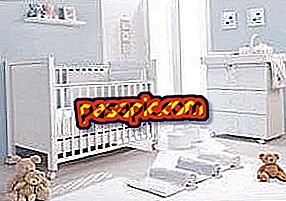How to teach children to recycle

Raising awareness of our children so that they are respectful of the environment is a task that begins when they have practically use of reason. The best way to educate them in a natural way is by having ourselves sustainable customs and causing the least possible impact on nature, such as recycling and separation of waste . In this we tell you how to teach children to recycle.
Steps to follow:one
Lead by example . Whenever it comes to educating children, this is the best advice that can be followed. Children replicate almost everything their parents do, and if they imitate our example, we will not need to stop to tell them how or why they have to carry out a task.
two
Have several garbage cans . Start the separation of the waste in your own house, having several differentiated containers in which to deposit them: a bucket for organic waste, another for paper, another for plastic, etc.
3
Let them draw the symbol of the house containers . For example, that each container has a picture of the type of waste that goes inside, and that it is your children who draw, cut and paste those symbols. Surely that way they do not forget where they have to throw the paper or the containers of the yogurts.
4
Games to learn containers . You can invent a game in which you have to assign the different waste to the containers, either with drawings cut out or joined by lines on paper, or with toys, which can be differentiated with labels. Explain the uses of the different containers according to their color: brown for organic matter, gray for waste, yellow for plastics and packaging, green for glass and blue for paper and cardboard, as well as other special containers, such as used batteries, oil and medications.
5
Explain why . Children, especially at a certain age, almost always want to know the why of things. Take the opportunity to explain that recycling is not a whim, but is necessary to take care of our planet, not dirty our environment and leave our children and grandchildren a careful environment.
6
Explain the consequences of pollution . A single pile contaminates thousands of liters of water, plastic takes decades and even centuries to biodegrade, there are islands of garbage floating in the ocean that harm animals and plants, greenhouse gases damage the ozone layer, accumulated garbage can cause fires in forests, etc.
7
Get involved with school activities that have to do with recycling. Environmental education is taught transversally in different stages of education. If the child sees that it is a subject in which we put interest and that we reinforce ourselves to learn it, they will consider it even more important.
8
Take advantage of the materials at home . Another way to lead by example is to reuse old or seemingly useless materials to create new things, such as toys. You can make rag dolls with old stuffed socks and scraps of clothes, or mount a game of bowls with empty plastic bottles. Imagination is what counts, you can see here how to make crafts with recycled material.


